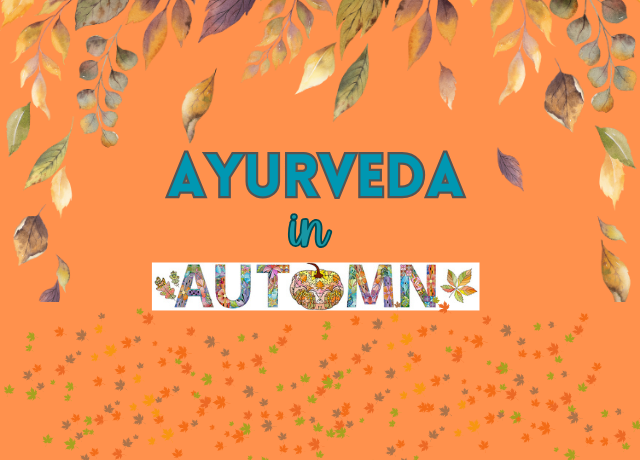In this article, we'll explore holistic strategies and practical tips on how to balance Vata Dosha during the fall and winter months.
As autumn begins and cooler temperatures arrive our bodies and minds respond to the changing conditions. According to Ayurveda, an ancient system of holistic medicine from India, these months are characterized by Vata dosha, a subtle energy associated with qualities like dryness, coldness, and mobility.


To stay healthy and harmonious during this time, it's essential to understand Vata dosha and adopt Ayurvedic practices tailored to the fall and winter seasons.
Understanding Vata Dosha
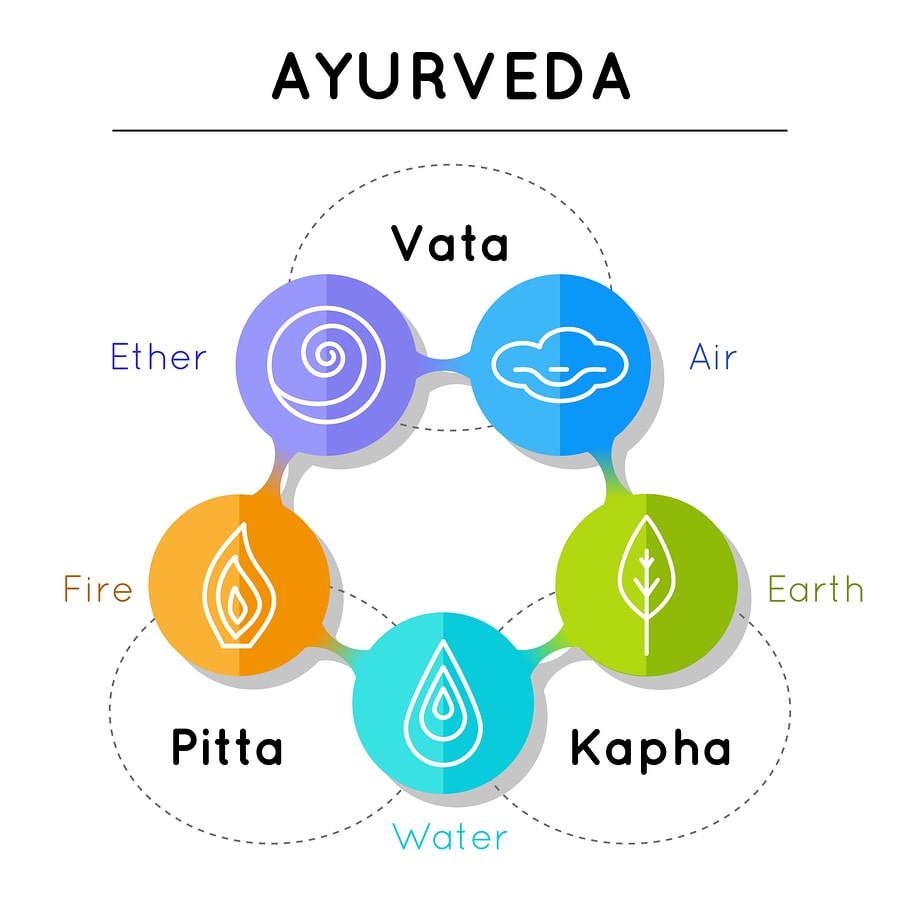
In Ayurveda, doshas are elemental forces that govern our physical, mental, and emotional well-being.
Vata is one of the three primary doshas, alongside Pitta (fire and water) and Kapha (earth and water). Vata is composed of air and ether (space) elements, making it inherently light, cool, and mobile.
Qualities of Vata Dosha
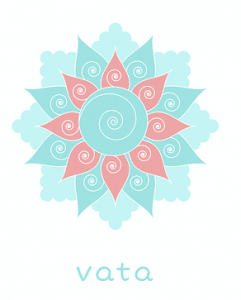
“Changeability Characterizes Vata People”
Vata energy is a combination of the elements of air and ether (space), much like the wind. It's known for being unpredictable and ever-changing.
Vata people often lack moisture and tend to not like the cold due to the wind-like nature of their energy.
Space, like the sky, has transparent qualities, and this translates into the lightness and versatility of Vata individuals.
When balanced, Vata people are creative, enthusiastic, and full of ideas – so many, in fact, it's hard to keep track!
They're also joyful, sensitive, and exhilarated – truly an artistic and imaginative bunch.
How Vata's Qualities Manifest as Imbalances
Vata's qualities manifest as imbalances because of the “like increases like” principle in Ayurveda.
When the external environment shares qualities like coldness, dryness, and mobility with Vata, it can exacerbate these same qualities within the body. This creates an excess of Vata, leading to physical and mental disturbances, such as dry skin, anxiety, and restlessness.
To restore balance, Ayurveda recommends countering these qualities with their opposites, like warmth, nourishment, and stability.
Dry: Vata's dry quality can manifest as dry skin, hair, and even dryness in the digestive tract.
Cold: Coldness is a hallmark of Vata and can lead to a preference for warmth and discomfort in cold weather.
Mobile: Vata's mobility can be seen in restless thoughts, constant movement, and a tendency to be always on the go.
Now, let's delve into how the qualities of fall and winter that align with Vata characteristics, and then look at why Vata imbalances are common during these seasons.
How Fall and Winter Align with Vata Characteristics
Dryness: As the air becomes crisp and humidity drops, the dryness of fall and winter mirrors Vata's inherent dry quality.
Coldness: The plummeting temperatures during these seasons resonate with Vata's cold nature, making us crave warmth and coziness.
Mobility: The winds of change that rustle through fall and the erratic weather patterns of winter echo Vata's mobility, which can stir up restlessness.
Why Vata Imbalances Are Common in Fall and Winter

Vata imbalances are common in fall and winter due to the alignment of the qualities of these seasons with the qualities of Vata dosa.
During fall and winter, Vata dosha can easily become aggravated, leading to health symptoms.
The combination of dry, cold, and mobile qualities in the environment can disrupt the delicate balance within our bodies.
As Vata becomes aggravated, you may experience symptoms such as constipation, dry skin, anxiety, digestive issues, and restlessness.
How To Balance Vata Dosha in Fall and Winter
Harmonizing with Nature's Rhythms
In Ayurveda, the key to well-being is aligning with nature's rhythms. Just as the leaves shed in fall and the world turns inward during winter, we too should adapt our lifestyles to these changes.
Here's how to harmonize with the season:
Assessing Your Vata State
To begin, assess your current state to determine if your Vata dosha is elevated.
Ayurveda offers various tools, including dosha tests, to help you gain insights into your constitution and imbalances.
>>>Understanding your dosha can guide your choices for diet, lifestyle, and self-care.
The Importance of Routine (Dinacharya)
In fall and winter, maintaining a routine is vital to pacify Vata. Regularity provides stability and predictability, helping to counter Vata's erratic tendencies. Establish a daily routine (Dinacharya) that includes consistent wake-up times, meal schedules, and bedtime rituals.
Creating a Nurturing Morning Routine
Start your day with a nurturing morning routine to set a positive tone. Begin with a warm oil self-massage, known as Abhyanga, to soothe your skin, calm your mind, and foster a sense of grounding.
The Significance of Abhyanga
Abhyanga involves massaging warm oil onto your body before your morning shower. Use a good Vata massage oil or choose oils like sesame or almond to calm Vata energies. This practice not only moisturizes your skin but also enhances circulation, calms your nervous system, and provides essential warmth. >>>Learn How to Give Yourself a Massage Here
Vata-Pacifying Diet for Fall and Winter
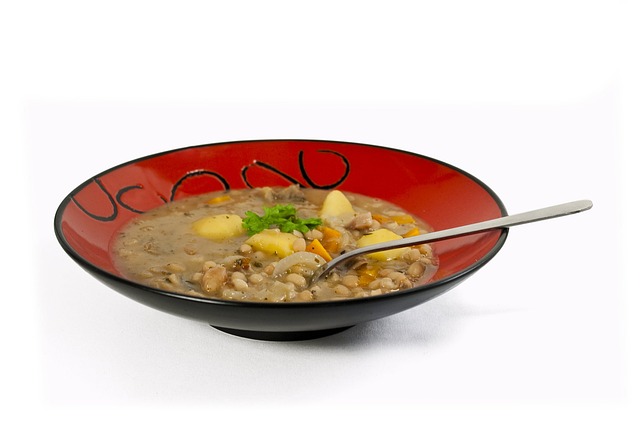
The importance of a healthy diet must never be underestimated. According to an Indian proverb, “You do not need medicine if your diet is right, and it is not medicine that you need if your diet is wrong”.
Eating determines the health of your body and mind. Food builds and nourishes all the tissues of the body, which in turn nourishes the mind and emotions.
Every food affects us according to our constitution and the external environment.
More on the Ayurvedic diet here.
More on Best Fall Foods for health here.
Qualities of Vata-Pacifying Foods
Warm: Opt for warm foods and beverages to counteract the coldness of the season.
Nourishing: Choose foods that are nourishing and satisfying to support your body during this time.
Grounding: Prioritize grounding foods that provide stability and comfort.
Vata-Pacifying Foods for Fall and Winter
Fruits: Cooked fruits like apples, pears, and figs offer warmth and sweetness.
Dairy: Enjoy warm milk, ghee, and homemade yogurt for their soothing qualities.
Nuts and Seeds: Almonds and sesame seeds, especially when soaked and peeled, are excellent choices.
Spices: Incorporate warming spices like ginger, cinnamon, cardamom, and cloves.
Herbal Teas: Sip on herbal teas with Vata-pacifying herbs like licorice, ashwagandha, and ginger.
Healthy Oils: Cook with warming oils such as sesame, almond, or ghee.
Sweeteners: Use natural sweeteners like honey or maple syrup in moderation.
Sample Meal Plans and Recipes to Balance Vata
Here are some simple meal plans and recipes to get you started:
Breakfast:
Warm oatmeal with chopped dates, cinnamon, and a drizzle of ghee.
A cup of ginger-spiced herbal tea.
Lunch:
Quinoa salad with roasted sweet potatoes, steamed broccoli, and a tahini dressing.
A cup of warm, spiced lentil soup.
Snack:
Sliced apples with almond butter and a sprinkle of cinnamon.
Dinner:
Baked salmon with a ginger and lemon sauce.
Steamed asparagus with a side of basmati rice cooked with ghee and cumin.
Dessert:
Stewed pears with a pinch of cardamom and a dollop of homemade yogurt.
A well-crafted Ayurvedic cookbook can be an invaluable resource for creating balanced meal plans and delicious recipes that align with your dosha and the changing seasons. Ayurvedic cookbooks can guide you in selecting ingredients, combining flavors, and preparing meals that promote both physical and mental well-being according to Ayurvedic principles.
>>Here are more Vata diet and lifestyle suggestions to heal your Vata symptoms.
Ayurvedic Herbs and Supplements for Vata Balance
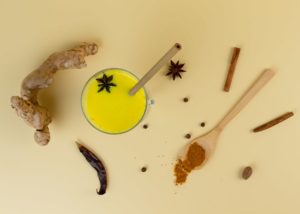
In addition to dietary adjustments, Ayurvedic herbs and supplements can play a significant role in balancing Vata dosha. Here are some commonly used options:
Ashwagandha: This adaptogenic herb reduces stress and anxiety while promoting vitality.
Shatavari: Known for nourishing and hydrating the body, Shatavari is excellent for combating dryness.
Triphala: This blend of three fruits supports healthy digestion and elimination.
Brahmi: Renowned for its calming and cognitive-enhancing effects, it reduces mental restlessness.
Vata-Pacifying Formulas:
These are tailored herbal formulas designed to balance Vata imbalances.
Dashmoola: Dashmoola is a combination of ten roots, primarily used to soothe Vata in the joints and muscles. It's commonly used in Ayurvedic decoctions to relieve stiffness and discomfort.
Maharasnadi Kwath: This herbal formula, Maharasnadi Kwath is used to pacify Vata in the joints. It's particularly beneficial for addressing conditions like arthritis and other musculoskeletal issues associated with Vata imbalance.
Chyawanprash: Chyawanprash is a traditional Ayurvedic herbal jam that contains a blend of herbs including Amalaki, Ashwagandha, and Guduchi. It's a potent immune system booster and supports overall vitality while helping to balance Vata.
Vata-Pacifying Herbal Blends: Many Ayurvedic companies offer proprietary herbal blends specifically designed to balance Vata dosha. These blends often include a combination of herbs known for their Vata-pacifying properties and may be available in powder, tablet or capsule form.
Oil Supplements: Certain Ayurvedic herbal oils can nourish the scalp and hair, preventing dryness and hair loss.
>>Here you can find the best Ayurvedic essential oils for each body type
Just remember that Ayurveda is a highly individualized system of medicine. What works best for balancing Vata dosha may vary from person to person, depending on their unique constitution and imbalances.
Therefore, it's advisable to consult with an Ayurvedic practitioner who can assess your specific needs and recommend the most appropriate herbal formula for you! They can tailor a treatment plan that addresses your unique constitution and any imbalances you may be experiencing.
Herbal Teas and Tonics for Vata Balance
Vata balancing teas and tonics are a delightful way to soothe Vata-related issues. Consider these options:
Ginger Tea: This warming tea improves digestion and provides comfort on chilly days.
Licorice Tea: Known for its sweet and soothing qualities, it calms anxiety and supports respiratory health.
Ashwagandha Tonic: Blend ashwagandha powder with warm milk and honey for a nourishing tonic.
Cinnamon and Cardamom Tonic: Simmer cinnamon and cardamom in water, add honey, and enjoy this fragrant brew as a Vata-balancing tonic.
Turmeric Latte: Prepare a turmeric latte with warm almond milk, turmeric, and a touch of black pepper for its anti-inflammatory benefits.
These herbal elixirs not only help balance Vata but also provide a comforting ritual during the colder months
Yoga Poses to Pacify Vata

Yoga is a powerful tool for balancing Vata dosha. The following poses and practices can help calm the restless nature of Vata:
Grounding Yoga Poses for Vata:
Grounding Yoga Poses for Vata:
Mountain Pose (Tadasana)

Stand tall, feet hip-width apart. Root your feet into the ground and focus on the sensation of stability and connection with the heart. Breathe deeply and mindfully.
Warrior I (Virabhadrasana I)

Warrior I (Virabhadrasana I): Step one foot back and bend your front knee, keeping the back leg straight. Raise your arms overhead, palms facing each other. Feel the strength and grounding in your legs as you hold the pose. This balancing pose encourages stability and focus.
Seated Poses

Poses like Seated Forward Bend (Paschimottanasana) and Bound Angle Pose (Baddha Konasana) promote relaxation and calmness.
Bound Angle Pose (Baddha Konasana): Sit with the soles of your feet together and your knees bent out to the sides. Hold your feet and gently press your knees toward the floor. This pose encourages a sense of grounding and openness.
Child's Pose (Balasana)

Child's Pose (Balasana): From a kneeling position, sit back on your heels and extend your arms forward, resting your forehead on the mat. Breathe deeply and surrender to the calming sensation of this pose. This is a restful pose that provides a sense of security and relaxation.
Savasana (Corpse Pose)

Savasana (Corpse Pose): Lie down on your back, arms by your sides, palms facing up. Close your eyes and consciously release tension from your body, allowing it to fully connect with the earth. This final relaxation pose allows for complete surrender and grounding.
Maintaining Physical Activity with Vata Considerations
Exercise is crucial for overall health, but it should be mindful of Vata tendencies during fall and winter:
Moderation: Engage in gentle, moderate-intensity activities to prevent Vata aggravation.
Warm-Up: Always begin with a proper warm-up to prepare your body for movement.
Stay Warm: Dress appropriately for outdoor activities to protect against the cold.
Indoor Exercise: Consider indoor options like yoga, Tai Chi, or dancing on particularly cold days.
Listen to Your Body: Pay close attention to how your body responds to exercise, modifying your routine if needed.
Rest and Recovery: Ensure you provide your body with adequate rest and recovery time between workouts.
Balancing physical activity with Vata considerations promotes overall well-being during fall and winter while preventing overexertion and imbalances.
Emotions and Vata Dosha
Vata dosha significantly influences emotional states, particularly during Vata-aggravating seasons. Here's how it connects to common emotional issues:
Anxiety: Excess Vata can lead to anxious thoughts and a racing mind. Calming Vata's mobility is essential to ease anxiety.
Restlessness: Vata's inherent mobility can result in a sense of restlessness, making it challenging to sit still or focus.
Nervousness: Imbalanced Vata can cause heightened sensitivity and nervousness. A calming and grounding lifestyle helps manage these emotions.
Mindfulness and Meditation for Vata Balance
Mindfulness and meditation techniques are invaluable for calming Vata-related mental disturbances:
Breath Awareness: Practice alternate nostril breathing to calm the mind and reduce anxiety.
Body Scan: Perform a body scan meditation to release tension and promote relaxation.
Yoga Nidra: Guided meditation that induces deep relaxation and calms the mind – one of the most powerful healing practices known to mankind!
Mantra Meditation: Repeating a calming mantra silently or aloud can quiet a restless mind.
Nature Meditation: Spend time in nature and practice a moving meditation outdoors to connect with the grounding energy of the earth.
Consistent mindfulness and meditation practices can have a profound impact on balancing Vata dosha, soothing the mind, promoting emotional well-being and improving immunity.
Creating a Peaceful Living Environment for Vata
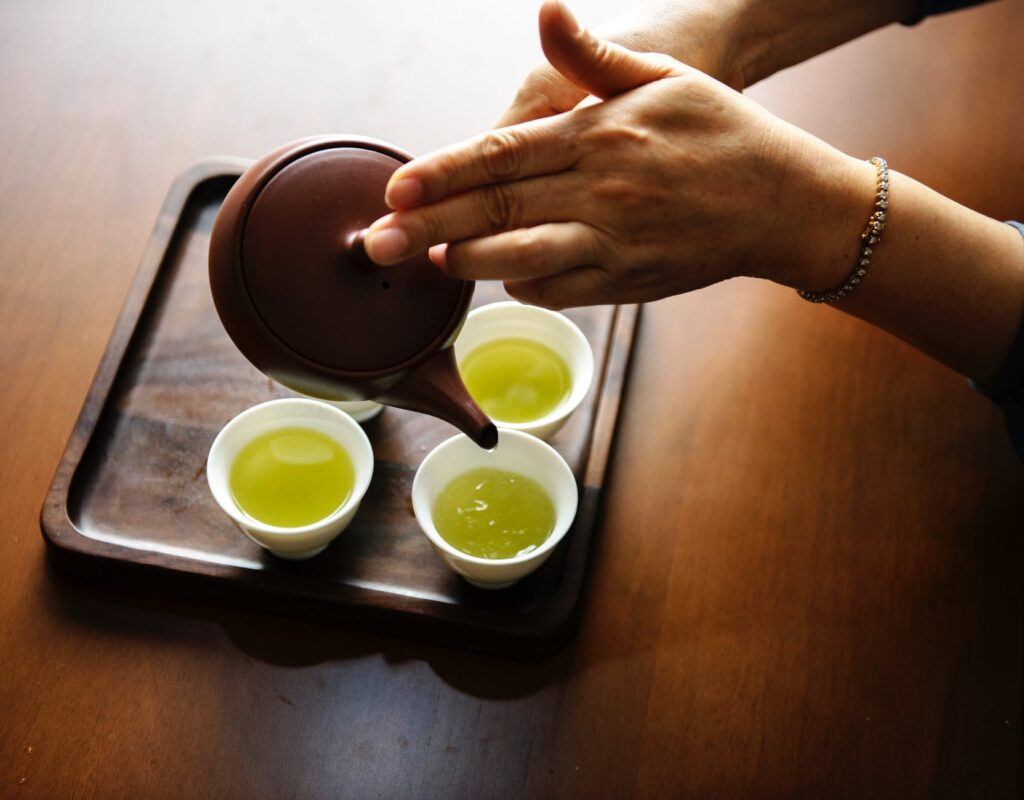
Your living environment greatly influences your well-being, especially during Vata season. Honor your space and create a safe, calm, secure environment at home and work. Turn your space into a sanctuary that nourishes you.
Here's how to create a peaceful, stress-free space:
Declutter: Eliminate unnecessary clutter to create a sense of spaciousness and tranquility.
Natural Elements: Incorporate natural elements like indoor plants, wooden furniture, and stone decor.
Soft Lighting: Use warm, soft lighting, such as lamps with dimmers or candles, for a cozy ambiance.
Aromatherapy: Use essential oils like lavender, sandalwood, or frankincense in a diffuser for calming scents.

Comfortable Furniture: Choose inviting furniture that encourages relaxation and provides security.
Art and Decor: Decorate with art or decor that inspires serenity, like natural landscapes or serene settings.
Soothing Colors: Paint with calming colors like soft blues, earthy tones, and muted greens.
Noise Control: Use rugs, curtains, and sound-absorbing materials to minimize noise pollution.
A peaceful living environment can significantly contribute to Vata balance by reducing mental agitation and promoting harmony and well-being.
Selecting Warm and Comfortable Clothing

Choosing the right clothing and natural fiber fabrics is essential to protect yourself from fall and winter's cold and dryness:
Layering: Dress in layers to trap warmth and adjust your clothing as needed for comfort.
Natural Fabrics: Opt for natural, breathable fabrics like wool, cotton, and silk.
Warm Accessories: Invest in warm accessories like scarves, gloves, and hats.
Quality Outerwear: Ensure you have a well-insulated and weatherproof jacket or coat.
Footwear: Choose sturdy and insulated footwear to keep your feet warm and dry.
Layering for Indoors: Indoors, wear cozy layers like soft sweaters, thermal undergarments, and warm socks.
By paying attention to clothing choices and maintaining warmth and comfort, you can protect yourself from cold and dryness, reducing the potential for Vata imbalances.
The Importance of Protecting the Body
Protecting your body from cold and dryness is crucial during fall and winter, as these environmental factors can aggravate Vata dosha:
Skin Health: Cold and dry weather can lead to dry, itchy skin and conditions like eczema. Proper clothing and moisturizing are essential.
Respiratory Health: Cold, dry air can irritate the respiratory passages, contributing to coughs and congestion. Wearing scarves or masks can help protect your throat and lungs.
Joint Comfort: Cold weather can cause joint stiffness and discomfort. Keeping warm and staying active can alleviate these issues.
Digestive Health: Eating warm, nourishing foods and staying hydrated supports digestive health, counteracting Vata's dry and erratic qualities.
Emotional Well-Being: Protecting your body from harsh cold and dryness helps maintain emotional stability, preventing Vata-related anxiety and restlessness.
A little extra care in clothing and lifestyle choices can go a long way in safeguarding your well-being during the Vata season.
Balancing Vata for Immune Support
A balanced Vata dosha plays a significant role in strengthening the immune system.
When Vata is balanced, it ensures the proper functioning of bodily systems, including digestion and nutrient absorption. This, in turn, supports the body in assimilating vital nutrients required for a robust immune response.
Additionally, balanced Vata promotes mental calmness and emotional stability, reducing stress, which can weaken the immune system.
Stress Reduction: Balancing Vata helps reduce stress, which weakens the immune response. By promoting emotional well-being and relaxation, Vata balance indirectly supports immunity.
Digestive Health: Vata-balancing practices, including a Vata-pacifying diet, support healthy digestion, essential for nutrient absorption and immune function.
Lubrication: Vata balance ensures that mucous membranes remain adequately lubricated, preventing dryness in the respiratory and digestive tracts, and reducing vulnerability to infections.
Balanced Energy: Balanced Vata provides consistent energy levels, preventing excessive fatigue that makes you susceptible to illness.
Restful Sleep: Vata balance promotes restful and rejuvenating sleep, which is crucial for a strong immune system.
Recommendations for Vata Immune-Boosting Practices and Supplements
To support your immune system during the fall and winter months, consider the following recommendations:
Stay Hydrated: Drink warm water throughout the day to stay hydrated and support your mucous membranes.
Vata-Pacifying Diet: Follow a Vata-balancing diet with warm, nourishing foods and spices that support digestion and immunity.
Proper Rest: Ensure you get adequate sleep to allow your body to rest and repair.
Mindfulness and Stress Reduction: Incorporate mindfulness, meditation, and yoga into your daily routine to manage stress and boost overall well-being.
Vitamin D: Since sunlight exposure decreases during fall and winter, consider vitamin D supplementation as advised by your healthcare provider to support immune function.
Probiotics: Incorporate probiotic-rich foods like yogurt or consider a high-quality probiotic supplement to promote a healthy gut, which is closely linked to immune health.
Hygiene Practices: Maintain good hygiene practices, including flossing your teeth, regular hand washing, and proper sanitation, to reduce the risk of infections.
Stay Active: Engage in regular, moderate exercise to promote overall health and immune function.
Herbal Teas: Enjoy herbal teas with immune-boosting herbs like echinacea, astragalus, and elderberry to fortify your body's defenses.
Balancing Vata
As highlighted in this article, balance Vata dosha through lifestyle adjustments, dietary choices, and mindful practices to strengthen your immune system naturally.
Conclusion: Nurturing Well-Being During Vata Season
Balancing Vata dosha during the fall and winter months is a holistic approach to nurturing your well-being. By aligning with the qualities of these seasons and incorporating Ayurvedic principles into your daily life, you can prevent imbalances associated with Vata, such as anxiety, dryness, and restlessness.
From creating a harmonious living environment to following a Vata-pacifying diet, Ayurveda offers a wealth of knowledge to guide you in maintaining balance and vitality.
By cultivating mindfulness, practicing yoga, and paying attention to your body's needs, you can thrive during the Vata season, supporting both your physical and emotional health.
Ultimately, nurturing your well-being during Vata season is a journey of self-discovery and self-care. By following the wisdom of Ayurveda, you can embrace these seasons with vitality, resilience, and inner harmony, ensuring a balanced and vibrant life.
Explore Ayurveda Further
If you're intrigued by the wisdom of Ayurveda and its holistic approach to well-being, consider exploring other Ayurvedic topics or seeking guidance from Ayurvedic experts for personalized advice.

Ayurveda offers a profound understanding of the interconnectedness of body, mind, and spirit, offering a path to enduring health and harmony in every season of life.
In summary, understanding and balancing Vata dosha during the fall and winter months is a journey of self-care and self-discovery. By aligning with the qualities of these seasons, following Ayurvedic principles, and nurturing your well-being, you can enjoy a harmonious and vibrant life throughout the year.
Ayurveda Lifestyle Products


